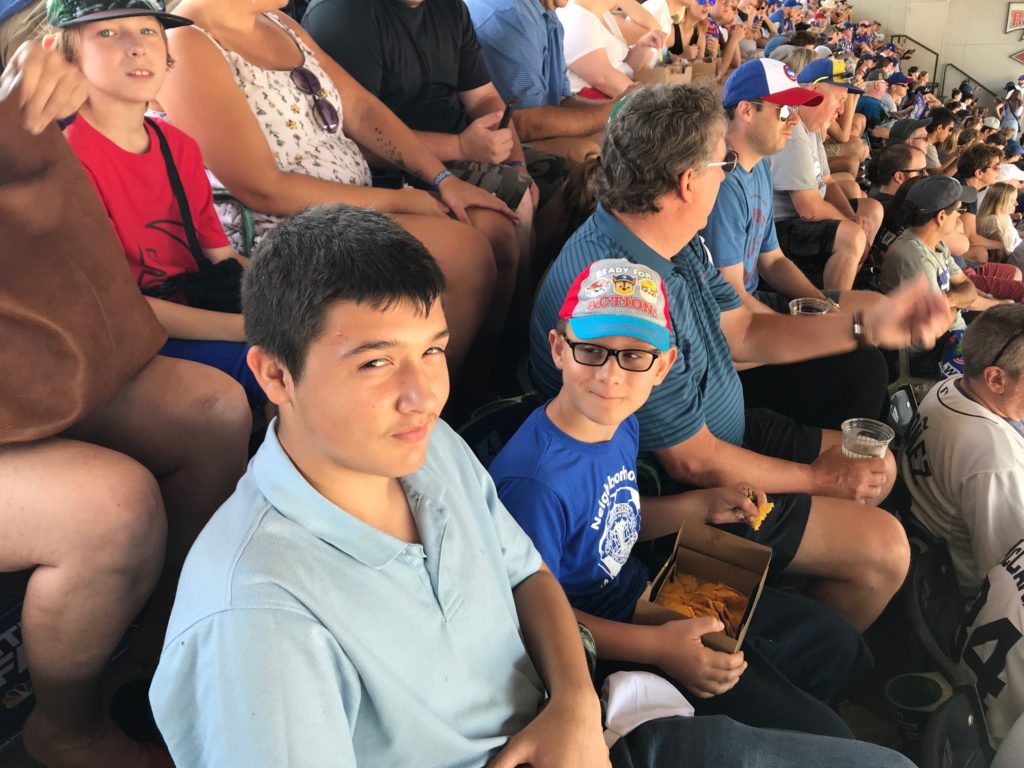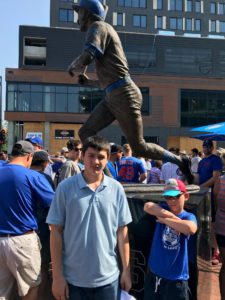If the doctor’s office had not called, I would not even have been here writing. I would perhaps have been on the CTA Blue Line on the way to my appointment, or more likely walking from the train station to his office. But they called less than an hour before the appointment. The urologist merely needs to follow up on a February 26 procedure, so could we just do a telephone consultation? Frankly, I had wondered why they had not offered that option already, so I accepted. The only difference it would make, I noted, was that I had planned to use the opportunity to shoot photos of the empty “el” cars, the empty streets as I moved up Michigan Avenue across the Chicago River, and perhaps the empty Millennium Park downtown, if it was in fact empty. Deprived of the need to go there, I simply walked the neighborhood, shot photos of restaurants open for takeout only, and took two shots of the empty el platform. Then the drizzling rain began, and it was time to come home and await the call, which came late as the doctor scrambled to maintain his schedule.
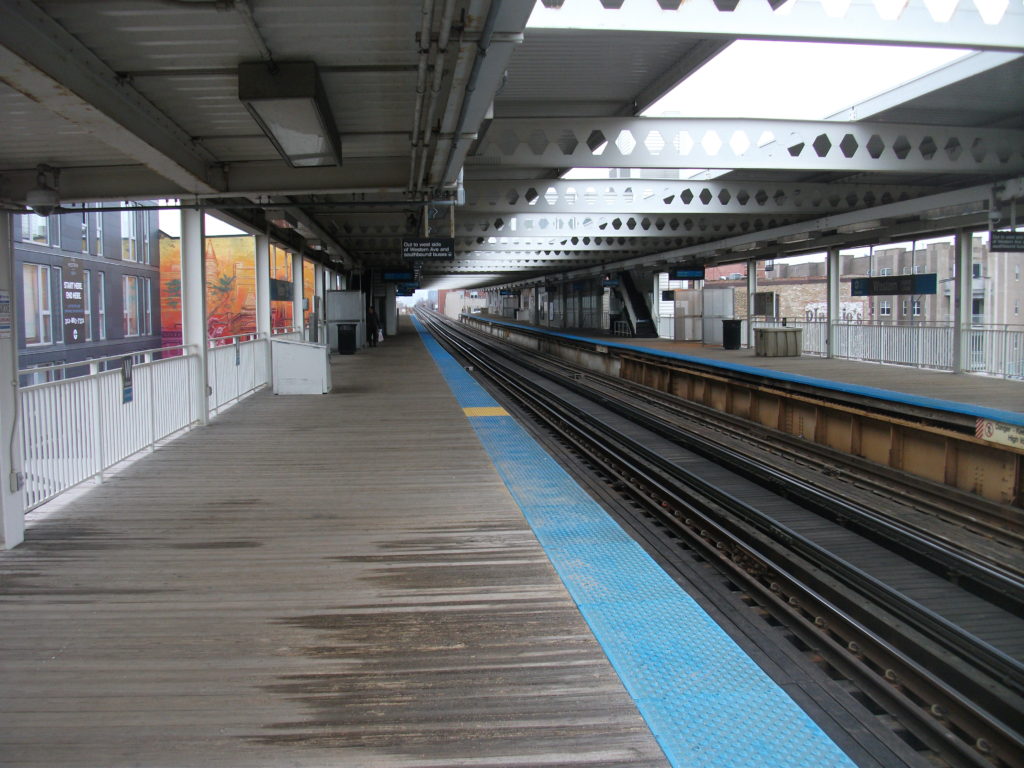
But at least I got that first paragraph written, before the nurse called, as I thought about a potent issue for urban planners amid the coronavirus pandemic. Under normal circumstances, there are few subjects most planners like to discuss more than the design and use of public spaces. These come in a variety of forms, such as trails, parks, and plazas, which are generally publicly owned, but they also include a wide variety of privately owned spaces that are nonetheless generally accessible to the public, such as restaurants, outdoor cafes, malls, stores, and recreational facilities like the YMCA. The latter category is more frequently available on a paying basis, but those lines can be blurred under specific circumstances, such as the rental of public spaces for private events. The one overriding factor is that planners are very much aware that the public life of cities is very much defined by the activity levels and density of use of these spaces. An urban park visited by almost no one is not a positive sign of urban vitality. A public concert in the park attracting hundreds or thousands of happy people dancing and swaying to the music is a sign of a city in love with life and alive with culture.
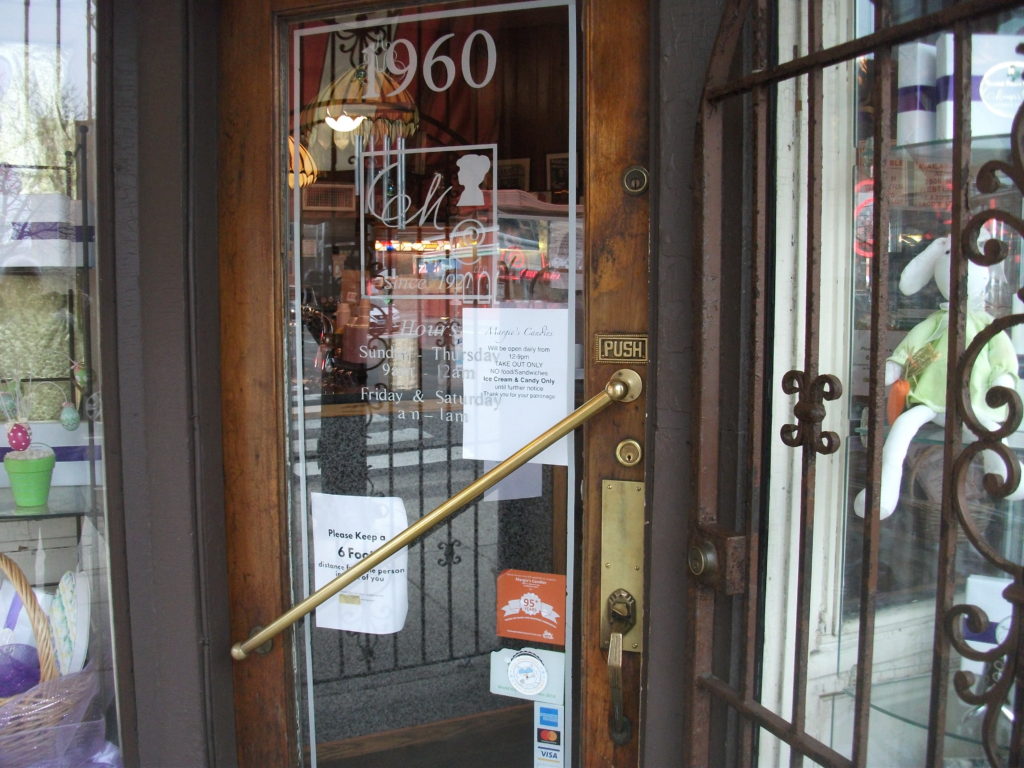
In the midst of pandemic, however, especially in dealing with a disease for which no one has yet developed an effective vaccine, not to mention a disease that disproportionately slays the elderly and those with respiratory vulnerabilities such as asthma, crowded public spaces are an indicator not of prosperity and vibrancy, but of danger. Social distancing to protect ourselves from unidentified carriers of COVID-19 is now an essential element of survival and personal protection. Yes, it’s nice to greet a friend in the park, but only if they keep their distance, and no, I don’t wish to shake your hand. There is a certain weary loneliness about this that is undeniable. Most of us are highly social beings, even the introverts among us. We like to talk, to exchange news, to share ideas. Thank God for the invention of the telephone and the Internet.
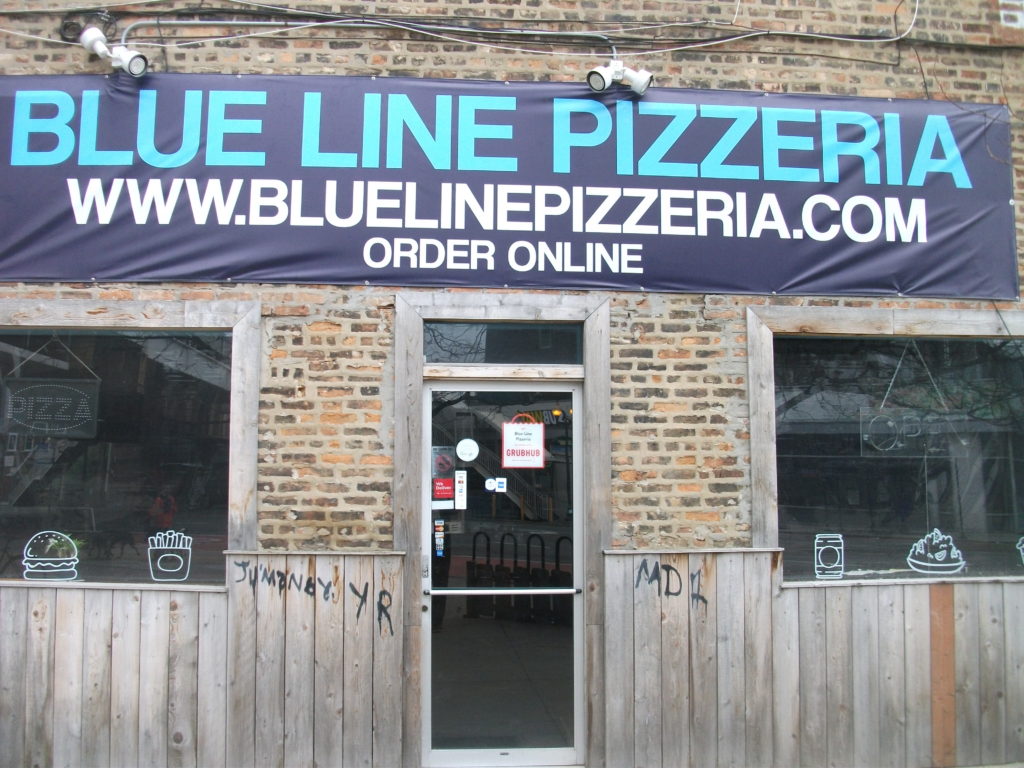
But it’s more than that. Public spaces often provide us, to one degree or another, with the opportunity to move, to exercise, to stay physically fit. I got word just two days ago that the X Sport Fitness gym at which I maintain a membership would be closed until further notice. The trainers, I learned, are left scrambling to determine how they could continue to earn a living. They are joining millions of others whose livelihoods are in jeopardy until this scourge passes. If you know someone in Chicago who can benefit from in-home fitness training, let me know. I can hook them up with capable trainers.
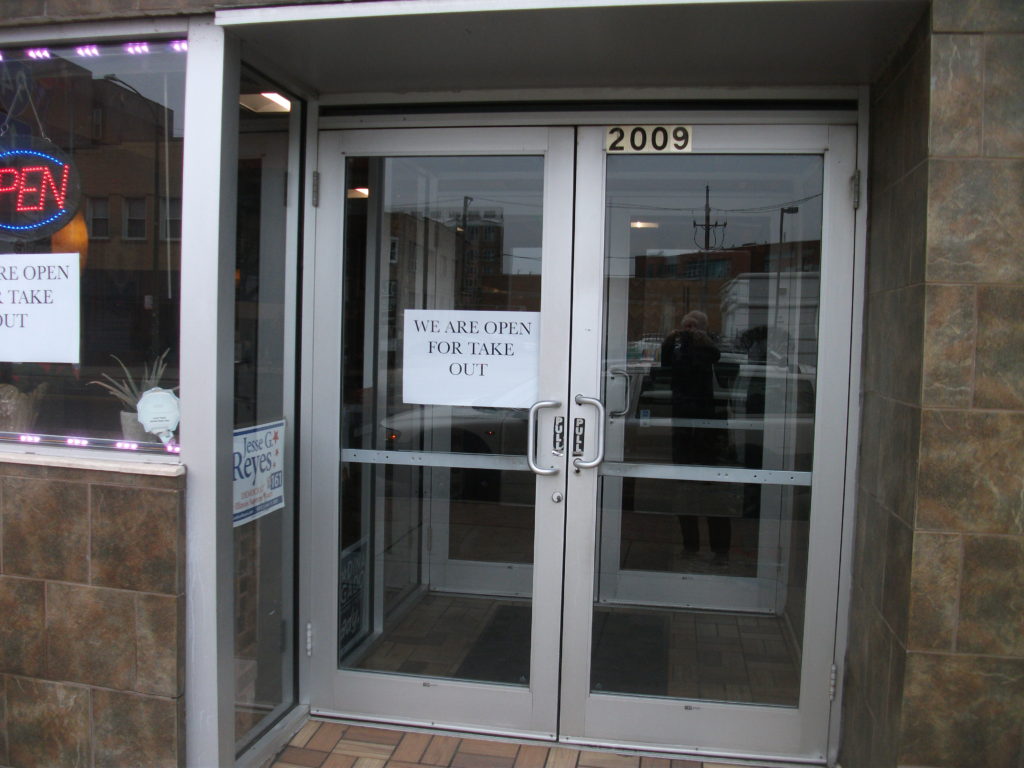
I will be looking to find other ways to stay physically active. As noted in posts of years past, I am fortunate to live near the 606 Trail. I need to get my bicycle tuned up for another season, and I can ride for miles. On my stroll yesterday, I could see that joggers were making generous use of the trail, as were walkers and others. Interestingly, the Rails-to-Trails Conservancy has posted information quoting medical experts suggesting that people should seek to maintain their exercise routines and use our public parks and trails for just these purposes. There is nothing worse for physical health than being cooped up in one’s house or binge-watching past seasons of whatever. Get out and move around. Just keep your distance.
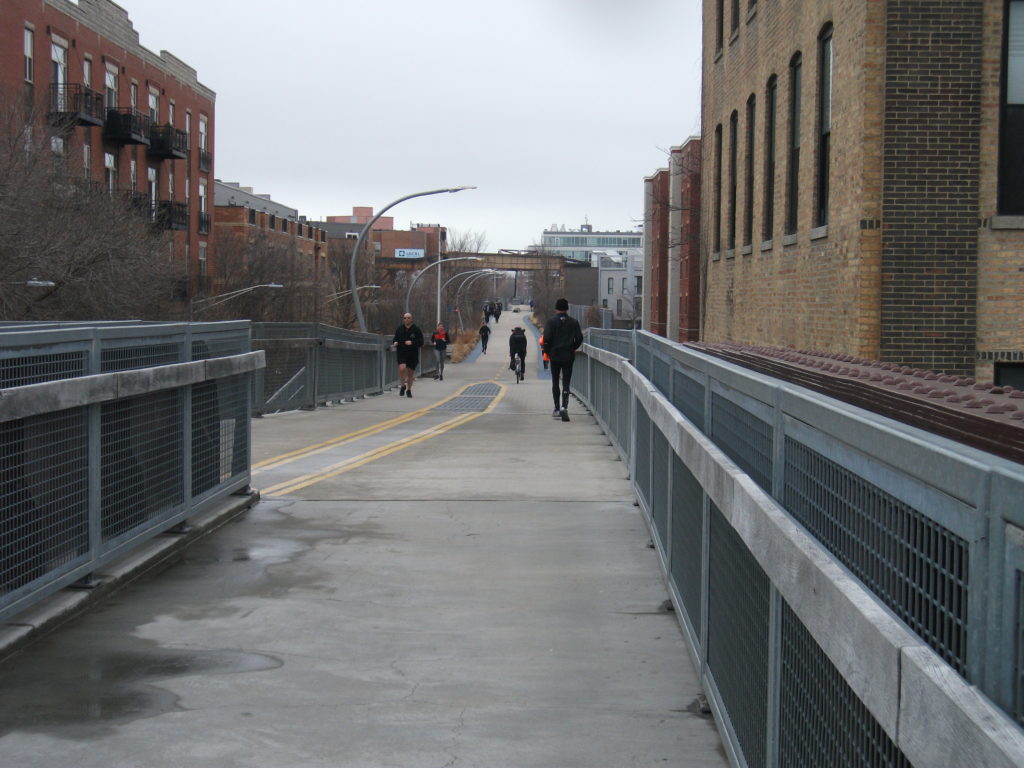
That goes for the kids, too. Playgrounds, for the most part, are still open. If you’re worried about touching the equipment, make the kids wear gloves or use disinfectant wipes on metal and plastic surfaces before letting them ride or play. But, above all, let them run around.
What we are all, I hope, trying to do for the near future is to slow or halt the transmission of this dangerous new coronavirus. That does not mean we become couch potatoes obsessed with watching our favorite 24-hour news source feed us endless details about the latest announcements, as important as they may be. There is still plenty of opportunity for most of us to stay healthy and drink in copious doses of fresh air. But we can also follow the guidance about social distancing and sanitation practices. In short, most of us should be very capable of walking and chewing gum at the same time. Just don’t spit that gum out on the sidewalk, thank you very much. Think about the safety of those around you. Use the trash can.
If we can all learn anything from this disturbing experience, it is perhaps an increased attention to sanitation and cleanliness in public spaces and the need to respect others by maintaining the quality of those spaces. Too many of us have seen public restrooms that are poorly maintained or not cleaned with adequate frequency. Those are obvious examples, but we can discern many others, including coughing and sneezing away from others, using facial tissue or handkerchieves, and simply cleaning up after ourselves, and understanding why some people find it necessary, even critical, to wear face masks or take other precautions. Think about the safety of those who must clean up after us, who often earn low wages and have less access to medical care. Don’t put them in greater jeopardy than necessary. Those of us involved in planning for post-disaster recovery often talk about finding the “silver lining” in each disaster experience. With any luck, that silver lining in the COVID-19 experience is a greater attention to public health, starting with the White House and extending all the way down to our own house or apartment.
The other big lesson for planning is the value of readiness and preparation for disaster. The old saw that “they also serve who only stand and wait” may be far more applicable and relevant than we realize. When President Trump eliminated a White House office that President Obama had created to focus on global pandemics, following the gruesome lessons of the Ebola virus, the assumption seemed to be that those studying and preparing for the next big public health crisis were simply wasting time and money. If that is true, why do we have an army of emergency managers spread across the country, preparing for natural and man-made disasters that, according to that line of logic, “may never happen”? The answer is that we should know all too well that reconstructing such capabilities after a new public health crisis or disaster is already underway wastes weeks and months of valuable time that can never be regained, and in this case, may be costing thousands of lives before it is over. Let us be wise enough as a nation never to repeat that mistake again.
Jim Schwab

